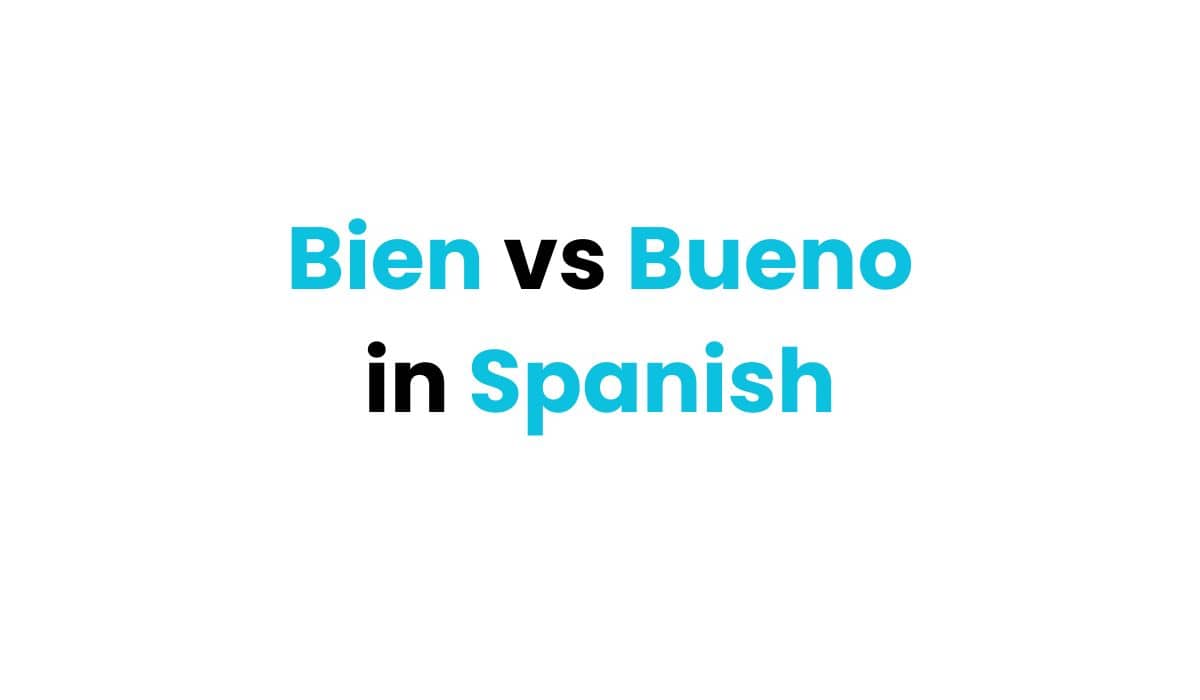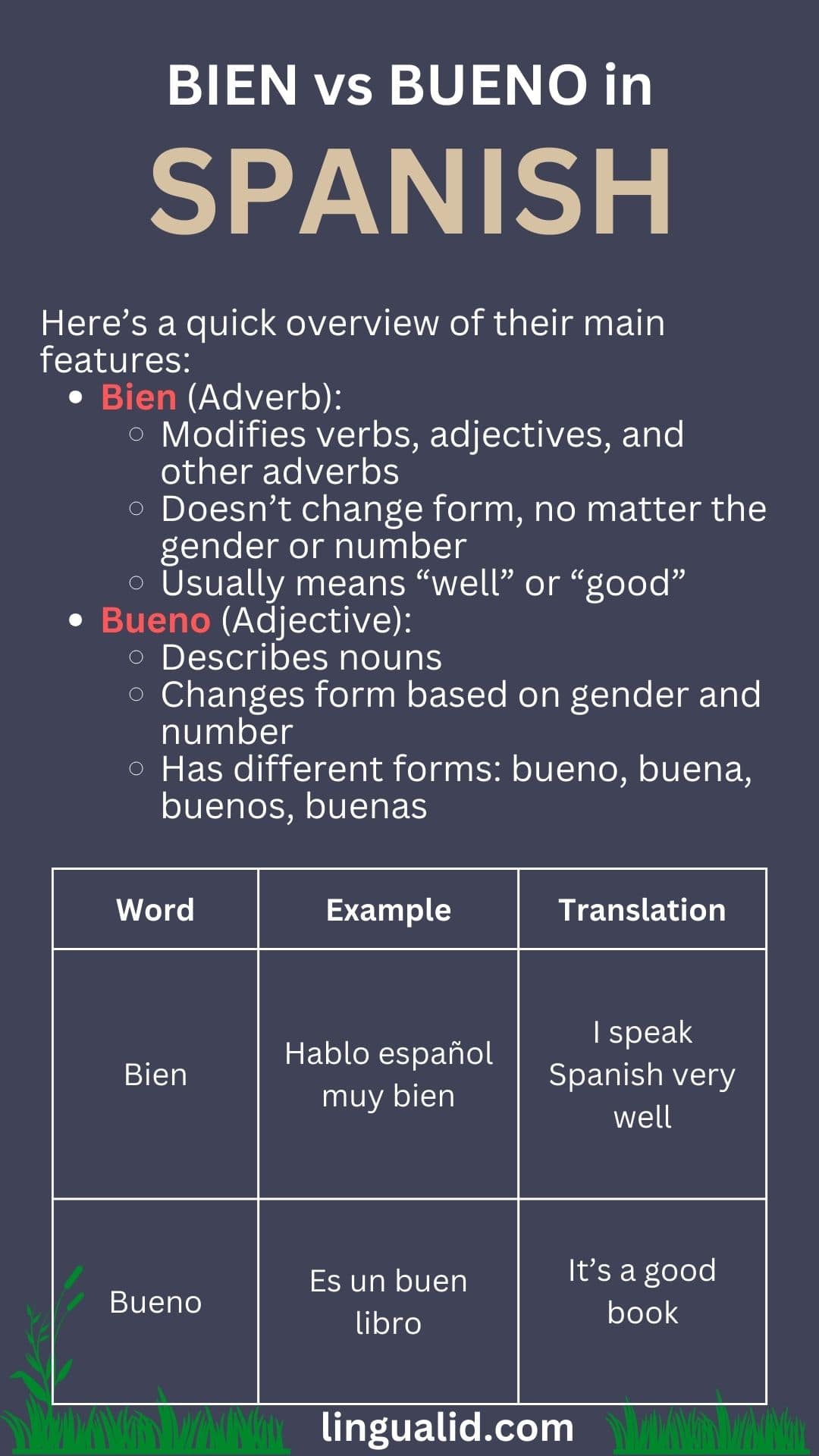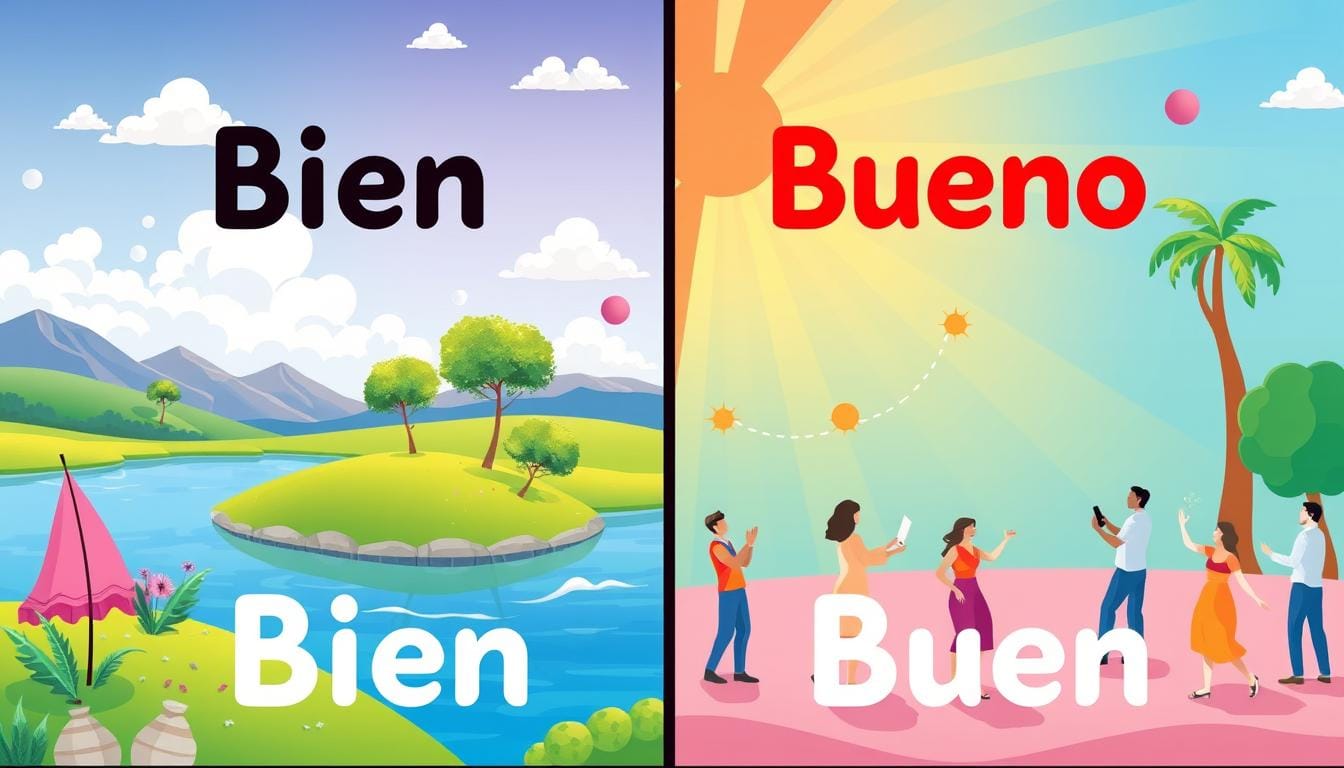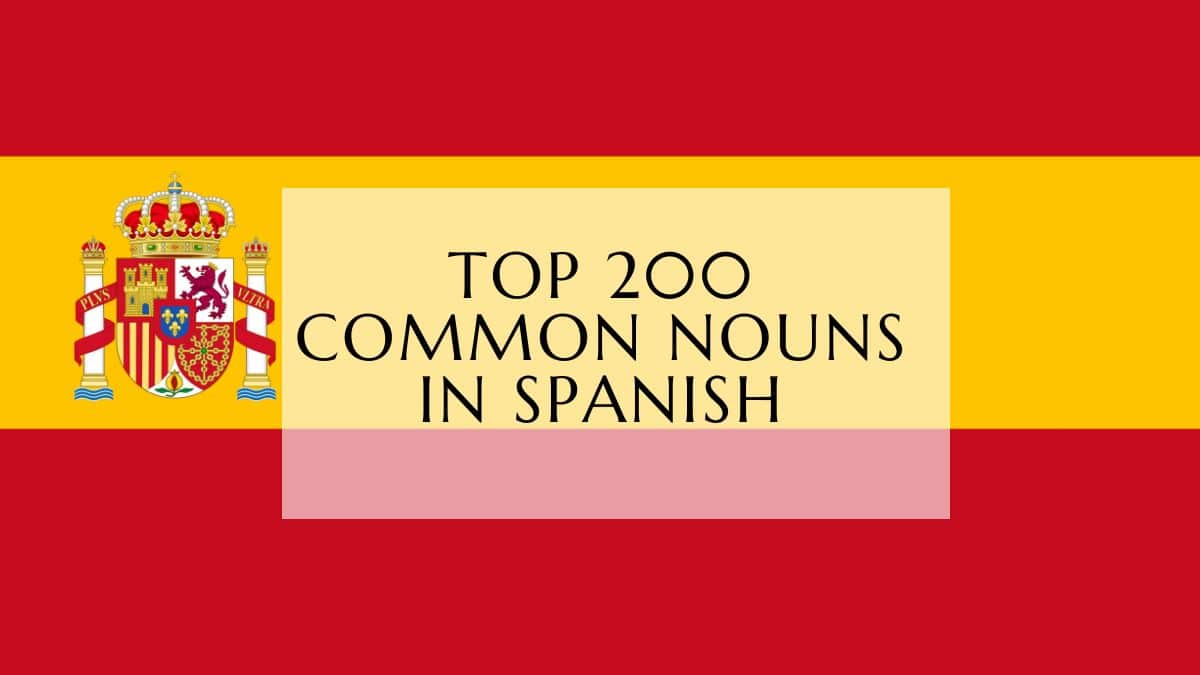Learning the difference between bien and bueno in Spanish can be tough. With over 559 million Spanish speakers, it’s key to get these details right. Knowing when to use bien or bueno helps you speak Spanish with confidence.
Many language learners find it hard to tell bien and bueno apart. They might look similar, but they have different uses and meanings. This can change how you talk about things in Spanish.

Key Takeaways
- Bien functions as an adverb, while bueno serves as an adjective
- Spanish requires grammatical agreement in gender and number
- Context determines the appropriate usage of bien vs bueno
- Both terms can express agreement in different scenarios
- Mastering these terms enhances overall Spanish communication skills
- Key Takeaways
- Adverb vs. Adjective: Breaking Down the Basics
- Practical Usage Examples
- Agreement Rules in Spanish Grammar
- Greeting Responses
- Intensifying Descriptions
- Describing People and Qualities
- Object and Food Quality
- Understanding Placement and Forms
- Gender and Number Agreement
- Responding to '¿Cómo Estás?'
- Using 'Bien' as an Intensifier
- What's the main difference between 'bien' and 'bueno' in Spanish?
- When do I use 'bien' in a sentence?
- How does 'bueno' change depending on the noun it describes?
- What is the difference between 'buen' and 'bueno'?
- Can 'bien' be used as an intensifier in Spanish?
- How do I know whether to use 'ser' or 'estar' with 'bueno'?
- Are there regional differences in using 'bien' and 'bueno'?
- What are some common mistakes learners make with 'bien' and 'bueno'?
The difference between bien and bueno is as tricky as the English “good” vs “well”. This has puzzled language experts for over a century. It shows how complex grammar can be across languages.
By looking into the small differences and how to use them, you’ll get better at Spanish. Whether you’re saying “¿Cómo estás?” or something positive, using bien or bueno correctly will make your Spanish better.
Understanding the Basic Grammar Rules for ‘Bien’ and ‘Bueno’
Learning to use bien and bueno in Spanish can be tricky. It’s important to know how they differ to communicate well. Let’s explore what makes bien and bueno special.
The main difference is their role in sentences. Bien is an adverb, and bueno is an adjective. This difference affects how they are used in Spanish.
Adverb vs. Adjective: Breaking Down the Basics
Here’s a quick overview of their main features:
- Bien (Adverb):
- Modifies verbs, adjectives, and other adverbs
- Doesn’t change form, no matter the gender or number
- Usually means “well” or “good”
- Bueno (Adjective):
- Describes nouns
- Changes form based on gender and number
- Has different forms: bueno, buena, buenos, buenas
Practical Usage Examples
Now, let’s see how these words are used in everyday situations:
| Word | Example | Translation |
|---|---|---|
| Bien | Hablo español muy bien | I speak Spanish very well |
| Bueno | Es un buen libro | It’s a good book |
“Language learning is about understanding nuanced differences, not just memorizing rules.”
Mastering bien and bueno takes practice and paying attention to context. The more you listen to native speakers and practice, the better you’ll get.
Essential Grammar Concepts for Both Words
Learning about adverbios y adjetivos in Spanish is key. “Bien” and “bueno” are tricky for learners. They each have their own role in speaking and writing.
“Bien” and “bueno” work differently in Spanish grammar. They might look alike, but they have specific jobs:
- “Bien” is always the same, an invariable adverb
- “Bueno” changes form depending on the noun’s gender and number
Agreement Rules in Spanish Grammar
The main difference is how they change nouns and verbs. Let’s see how they work:
| Form | Masculine | Feminine |
|---|---|---|
| Singular | Bueno | Buena |
| Plural | Buenos | Buenas |
Note: “Bueno” changes with the noun, but “bien” stays the same.
- Es un buen libro. (It’s a good book)
- Tengo buenos amigos. (I have good friends)
- Ella baila bien. (She dances well)
Grasping these small grammar details will make you better at speaking Spanish. You’ll be able to say what you mean clearly and with confidence.
Common Usage Scenarios for ‘Bien’
Learning to use ‘bien’ and ‘bueno’ is key when you start learning Spanish. ‘Bien’ is a flexible adverb that adds depth to Spanish talks. It makes your Spanish practice more real and detailed.
- Responding to greetings
- Intensifying descriptions
- Expressing agreement
- Praising actions
Now, let’s look at when ‘bien’ is most useful in Spanish:
Greeting Responses
When someone says “¿Cómo estás?” (How are you?), ‘bien’ is a simple way to reply. For example:
“¿Cómo estás?” – “Bien, gracias.”
Intensifying Descriptions
People in Spain use ‘bien’ to stress points, like “very” in English. For example:
- Bien claro – Very clear
- Bien rápido – Very fast
| Context | Example | Translation |
|---|---|---|
| Health Status | Estoy bien | I’m fine |
| Technological Function | Mi computadora funciona bien | My computer works properly |
| Performance Praise | Lo hiciste bien | You did it well |
Knowing when to use ‘bien’ will boost your Spanish skills. It makes your conversations sound more natural.
When and How to Use ‘Bueno’ Correctly
Learning when to use ‘bueno’ in Spanish can really boost your skills. This word is key for describing people, things, and experiences with detail and accuracy.

‘Bueno’ is special in Spanish because it can be an adjective. Unlike ‘bien’, which is an adverb, ‘bueno’ fits into many different situations easily.
Describing People and Qualities
People use ‘bueno’ to talk about others in important ways:
- Describing personal character: “Juan es un bueno amigo” (Juan is a good friend)
- Evaluating behavior: “Eres bueno con los niños” (You are good with children)
- Expressing attractiveness: “Él es bueno” (He is good-looking)
Object and Food Quality
The word is also great for talking about things and food:
- Food tastiness: “Esta comida está muy buena” (This food is very tasty)
- Object quality: “Es un bueno teléfono” (It’s a good phone)
- Health benefits: “El ejercicio es bueno para la salud” (Exercise is good for health)
“Bueno” makes your Spanish more interesting and detailed.
To use ‘bueno’ well, you need to know its forms: bueno (masculine singular), buena (feminine singular), buenos (masculine plural), and buenas (feminine plural). Its flexibility makes ‘bueno’ a strong tool in Spanish.
The Special Case of ‘Buen’ vs ‘Bueno’
Learning Spanish means understanding the difference between ‘buen’ and ‘bueno’. These words might seem alike, but they follow clear rules. Knowing these rules helps you use them correctly.
- ‘Buen’ is used before masculine singular nouns
- ‘Bueno’ appears after nouns or on its own
- Both forms must match the noun’s gender and number
Understanding Placement and Forms
The word changes based on its use. Here are the main forms:
- Buen: Used before masculine singular nouns
- Example: Buen día (Good day)
- Example: Buen amigo (Good friend)
- Bueno: Used after nouns or alone
- Example: Un coche bueno (A good car)
- Example: Está bueno (It is good)
“Grammar is the logic of speech, even as logic is the grammar of reason.” – Richard C. Trench
Gender and Number Agreement
Spanish needs adjectives to match nouns exactly. ‘Bueno’ changes its ending to fit:
- Masculine Singular: Bueno/Buen
- Feminine Singular: Buena
- Masculine Plural: Buenos
- Feminine Plural: Buenas
Practicing these changes will make your Spanish sound more natural. It helps avoid mistakes that can confuse others.
Bien vs Bueno in Spanish: Key Differences and Examples
Learning the difference between bien and bueno in Spanish can really boost your skills. These words might seem alike, but they have different roles in grammar. Knowing this can make your Spanish better.

Let’s look at the main differences between bien and bueno with examples:
- Bien is an adverb that tells how something is done
- Bueno is an adjective that describes the quality of something
Here are some examples to show how they are used differently:
| Word | Type | Example | English Translation |
|---|---|---|---|
| Bien | Adverb | Canto bien | I sing well |
| Bueno | Adjective | Es un buen cantante | He is a good singer |
“Language learning is about understanding subtle differences”
Many learners find it hard to tell bien and bueno apart. The trick is to remember that bien talks about actions, while bueno talks about things or people. For example, you say “trabajo bien” (I work well) but “soy un buen trabajador” (I am a good worker).
Getting good at this takes practice and paying close attention to the context. Listening to native speakers and practicing regularly will help you understand these differences better.
Mastering the Art of Using ‘Bien’ in Conversations
Learning about the uso de bien y bueno is key for improving your Spanish. Knowing how to use this word can make your conversations sound more natural.
Responding to ‘¿Cómo Estás?’
When someone asks ¿Cómo estás? (How are you?), “bien” is the usual answer. Spanish speakers have many ways to say this:
- Estoy bien (I’m well)
- Muy bien (Very well)
- Bastante bien (Quite well)
Using ‘Bien’ as an Intensifier
In learning Spanish, you’ll find out that bien can also mean “very.” It’s like saying “very” in English. It adds emphasis before adjectives.
| Phrase | Translation | Meaning |
|---|---|---|
| Bien grande | Very big | Emphasizing size |
| Bien bonito | Very beautiful | Highlighting beauty |
“Bien” makes simple descriptions more expressive in everyday Spanish.
By mastering these examples, you’ll sound more like a native Spanish speaker. This will add depth and authenticity to your language skills.
Conclusion
Learning the difference between bien and bueno in Spanish takes practice and patience. Knowing when to use each word makes your Spanish better. It helps you speak more clearly and with confidence.
Practicing Spanish every day is crucial. Watch Spanish movies, talk to native speakers, and join language groups. This way, you’ll get better at using bien and bueno correctly.
Every time you speak Spanish, you’re practicing. Start with simple sentences and get more complex as you go. Use online tools, apps, and groups to help you learn.
Staying committed to learning these differences will improve your Spanish. Enjoy the journey of learning Spanish. It’s a fun way to explore a new language.
FAQ
What’s the main difference between ‘bien’ and ‘bueno’ in Spanish?
When do I use ‘bien’ in a sentence?
How does ‘bueno’ change depending on the noun it describes?
What is the difference between ‘buen’ and ‘bueno’?
Can ‘bien’ be used as an intensifier in Spanish?
How do I know whether to use ‘ser’ or ‘estar’ with ‘bueno’?
Are there regional differences in using ‘bien’ and ‘bueno’?
What are some common mistakes learners make with ‘bien’ and ‘bueno’?
Oualid Cheddadi is the founder of Lingualid, a platform that inspires independent language learners worldwide, regardless of the language they are learning. The name “Lingualid” is derived from the Portuguese word for “language,” “língua,” and the last three letters of Oualid’s name, “Lid.”



